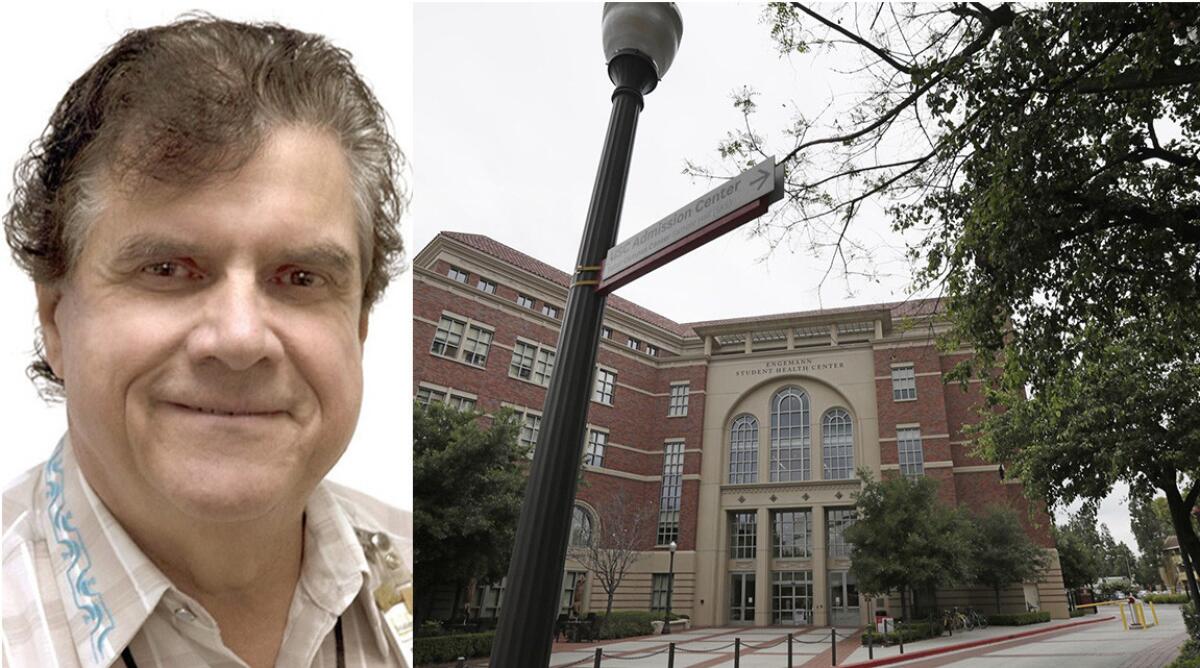Reports of rape and fondling at USC surged in 2018 due to allegations against George Tyndall, officials say

Reports of sex offenses at the University of Southern California rose sharply last year, a spike that campus officials say results from a mass of allegations of sexual misconduct against former campus gynecologist George Tyndall.
The annual security and fire safety report, released by the university Tuesday, shows 92 reports of rape and 25 reports of fondling last year, a combined increase of more than 200% from the prior year. In 2017, the university received 17 reports of rape and 17 reports of fondling, according to the document.
While the reports involving Tyndall stem from alleged misconduct prior to 2018, university officials say they were brought to their attention last year, which is why they are now being reported.
Of the 92 incidents that USC classified as rape reports last year, 68 involved allegations of misconduct against Tyndall dating to before June 2016. Four of the 25 instances of fondling tallied also involved allegations against Tyndall during the same time frame, according to the report.
The allegations against Tyndall classified as rape in the report all occurred in the context of gynecological exams. None involved intercourse, the report states.
âThis is the first time weâve had numbers of the magnitude,â USC Department of Public Safety Assistant Chief David Carlisle said in an interview Tuesday. âWe attribute that to the Tyndall investigation.â
Colleges across the country are required to compile and release crime statistics annually under the Clery Act, which stemmed from a 1986 rape and killing on a Pennsylvania campus, in an effort to give the public an accurate view of campus safety.
The Times revealed in May 2018 that Tyndall had been the subject of numerous complaints during his tenure at USC from female students and staff. Among the accusations were that he touched women inappropriately during pelvic exams, made suggestive and lewd comments about their bodies, and photographed their genitals for purposes colleagues found dubious.
Tuesdayâs report does not include all allegations of misconduct lodged against Tyndall. More than 800 former and current students have filed lawsuits in federal and state court alleging they were harmed by Tyndall, according to the university.
The incidents included in the document had to meet specific criteria, including the location of the alleged assault, whether it was reported to a campus official and whether it met the classification of rape under the law, said Stacy Giwa, the universityâs vice president of ethics and compliance.
Some of the reports the school received related to Tyndall did not fit those requirements, she said. But that could change as the college gets more information.
âWe are committed to revising the statistics upward should we get additional information about these matters,â Giwa said. âWe want to be clear because we really want our students to feel safe and have a positive experience at USC, so we take this very seriously.â
Tyndall has asserted repeatedly that he did nothing wrong and that his treatment of patients was consistent with good medical care.
Tyndall, who began working at the university health center in 1989, was allowed to continue treating students until 2016. He was placed on paid leave, and university lawyers and administrators reached a secret deal with him a year later under which he left USC with a financial payout and a clean record with the medical board.
Since The Timesâ report, the board has moved to strip Tyndall of his license and USC has agreed to a $215-million federal class-action settlement with former patients.
Earlier this year, Los Angeles County prosecutors charged Tyndall with 18 counts of sexual penetration of an unconscious person and 11 counts of sexual battery by fraud for touching an âintimate partâ of a patient âfor the purpose of sexual arousalâ and under the guise of âprofessional purpose,â according to the criminal filing. He has pleaded not guilty.
More to Read
Sign up for Essential California
The most important California stories and recommendations in your inbox every morning.
You may occasionally receive promotional content from the Los Angeles Times.











